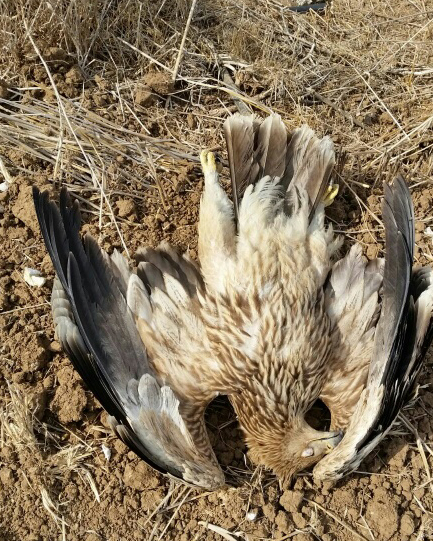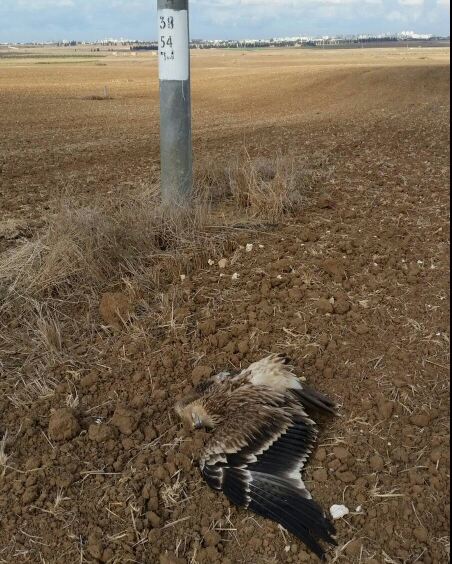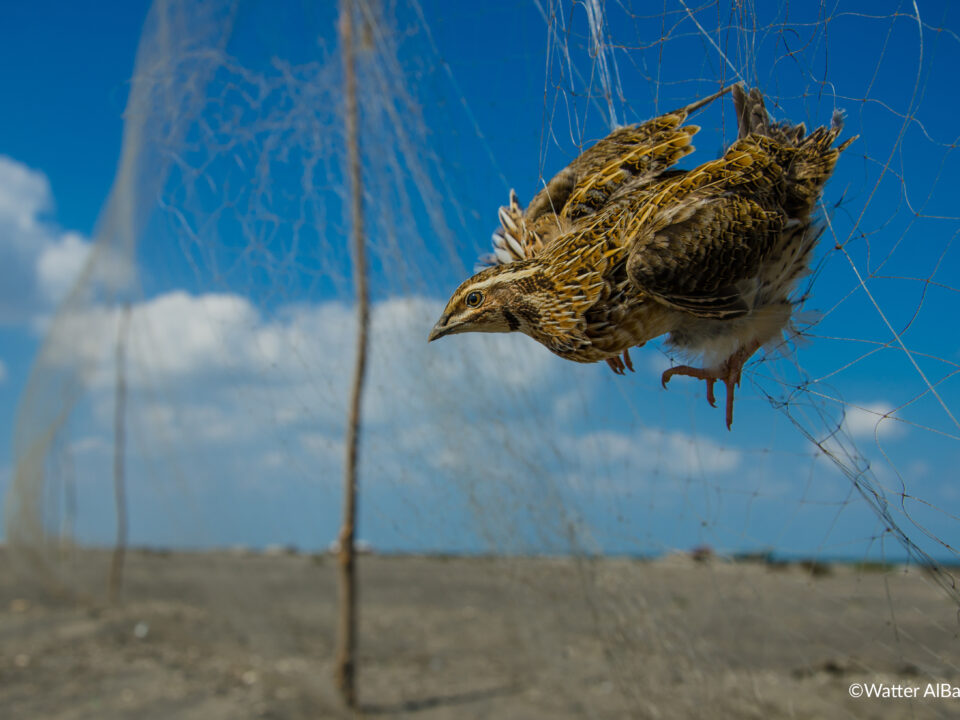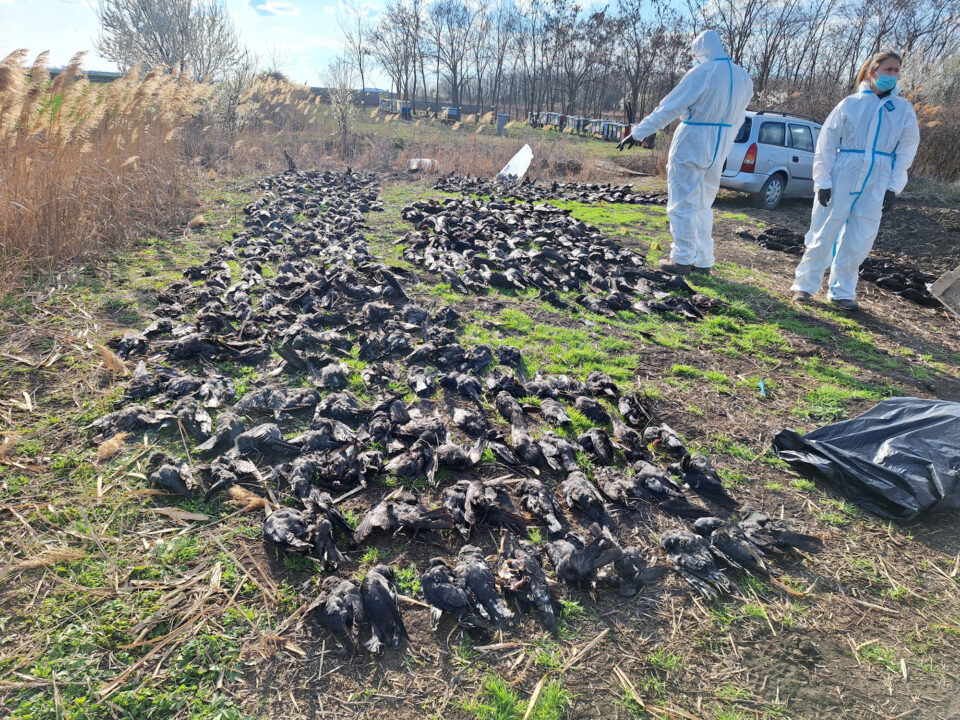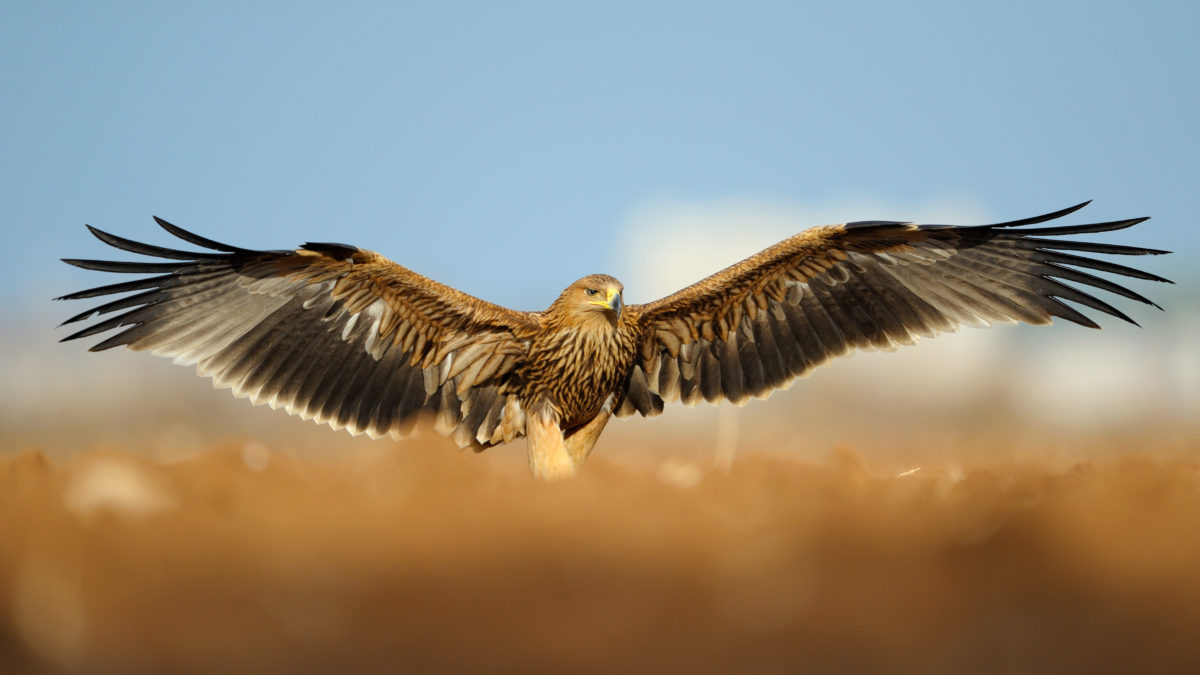
The power of many – a BirdLife mission to save the Eastern imperial eagle
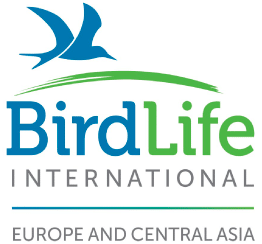
The distinctive silhouette of the Eastern imperial eagle Aquila helica – with a body length of about 80cm and a wingspan of 2m – cuts an intimidating figure. Its body is almost entirely brown, though the crown and sides of the neck are light gold and patches of white mark the shoulders as well as the edges of its wing coverts and tail; its call is a harsh and deep repetitive bark. It is therefore not so surprising that this powerful predator is brought down far more by human interference than by natural causes.
Listed as Vulnerable on the IUCN Red list, this mighty bird’s population is declining globally. Estimates of how many of these eagles are left range between 3,500 – 15,000 individuals. This embattled bird is a lowland species that has been pushed to higher altitudes by persecution and habitat loss in Europe. In central and eastern Europe, it breeds in forests up to 1,000 metres above sea level, in steppe and agricultural areas with large trees, and nowadays also on electricity pylons.
Medium voltage power lines (20-35 kV) pose a serious threat to birds. When a bird lands on the pylon, it can easily be electrocuted by touching two wires or a wire and the grounded part of the pole at the same time. The bigger the bird, the higher chance for this to happen, though small raptors, like kestrels, die in high numbers, as well. In most cases, electrocution causes immediate death. Young birds are more prone to this threat than adults.
In 2017, BirdLife’s Georgian partner, Society for Nature Conservation – SABUKO, tagged several Eastern Imperial eagle chicks with GPS transmitters. This work was done in close collaboration with our Hungarian partner MME – who leads the EU-funded PannonEagle LIFE project to restore populations across the wider region in Austria, the Czech Republic, Slovakia and Serbia.
Thanks to these GPS transmitters, SABUKO could follow the movement of these birds, in Georgia and beyond. Sadly, one of their birds died in the Northern Negev region of Israel. It had flown there for the winter after originally being tagged by SABUKO with a transmitter in Rustavi, near Tbilisi.
With the information they had SABUKO reached out to our Israelian Birdlife partners, Society for the Protection of Nature in Israel – SPNI, and shared the exact coordinated of where the tagged imperial eagle had gone down. SPNI could quickly get to the site and report that the tagged eagle had been found electrocuted under an unprotected power-line.
The tragic death of this threatened species is all the more heart-breaking because it could be avoided. Many BirdLife partners have been asking, and helping energy companies to incorporate proven mitigation measures to prevent bird collisions and electrocution with power lines.
After this particular bird was found, SPNI and BirdLife Europe & Central Asia called on the Israel Electric Corporation to protect all exposed power lines immediately. This is especially important in countries in this region that are busy migration bottlenecks for the entire Africa-Eurasian flyway.
The BirdLife partnership can continue helping these threatened birds with your help.
